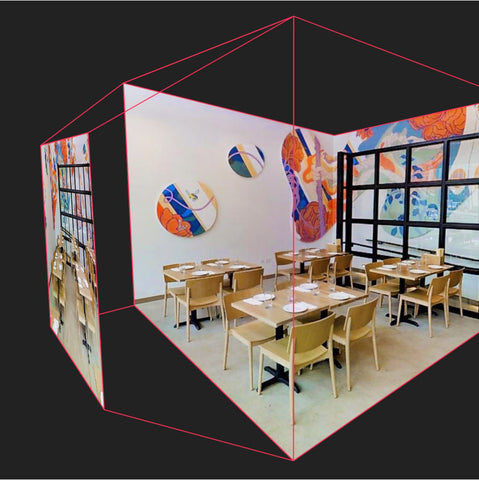Is the Metaverse a Digital Twin?
Posted by Matt Lacey on
We had lots of interesting questions sent in to our last webinar - so many that we weren't able to cover everything in the scheduled hour! Fortunately, our guests kindly agreed to write some answers to those we didn't get to, and these are all shared with participants. Because our Guest, Simon Sadek of 360virtualtour.co gave us such an in-depth answer to one question, we've decided to feature it below as a guest blog:
What are your thoughts on whether the metaverse can be seen as a digital twin to the real world?
This is a great thought provoking question and one in all honesty, doesn’t have a fulfilled answer in my opinion as of yet in todays’ current technological state. Ultimately, The Metaverse hasn’t been fully created or released yet.
The Metaverse has a different meaning depending on the person and industry you ask, Is the Metaverse a form of mixed Augmented Reality or a true online digital space that as avatars we interact with in whatever fashion it allows us to (The Meta Facebook suggestion)? One thing is for certain, all aspects of the physical world, whether that be objects, spaces, workflows, etc are being digitised and tokenised. This allows relative stakeholders to quickly and efficiently gather data to process and model accordingly.
Digital Twins in my world, the process of capturing the physical world with specialised laser hardware, are in fact models of that captured reality. These are used in so many ways from boosting local tourism, to training, online shopping and e-commerce, to digitising heritage for archival purposes, to showing off your new hotel or retail and bar space, to documenting AEC builds. The uses of these scanned digital twins are endless.

Many companies out there especially in the gaming world, are taking physical world 3D mesh data captured of spaces and using these in there in gaming environments. If you can imagine, an online game, being used via a headset medium…you as the gamer are in fact being immersed into that gaming space. So coming back to the question, yes, I do believe The Metaverse is a form of a digital twin to the physical world. And I do believe, that The Metaverse adoption will greatly accelerate as more digital twins of the real world are scanned, processed, documented and naturally fed into a highly complex machine learning algorithm that will evolve to assist in an online digital world. Of course, The Metaverse will also have its own custom built areas by its creators, but there isn’t nothing to stop a catalogue of objects/spaces of captured reality to be made available to Metaverse content creators to choose from and include into their Metaverse spaces, is there? Dare I speak of showcasing NFTs into Metaverse spaces?
Matterport already have their own “Cortex artificial intelligence which is a deep learning neural network that creates robust 3D spatial data from a wide variety of capture devices”, Google have deep learning algorithms in built to Google Street Views and Maps, Epic Games’ RealityCapture, Hexagon's Leica systems and many other companies out are using various photogrammetry and laser techniques out there which create 3D models/digital twins.
Even driverless cars, with in-built Lidar systems are constantly generating real world digital twins, processing the vast amounts of data being collected by the onboard systems such as road signs, routes, dimensional data, etc – all of this data goes somewhere to be processed. Is this a small Metaverse of its own?
Such a great question, and one with many answers in my opinion. Lets circle back on this in 3-5 years’ time
And you can watch all of Simon's presentation, along with lots of other great surveying and digital twin content on our Youtube channel.
Share this post
- 0 comments
- Tags: Construction, Laser Scanning, Lidar, lidar camera, matterport, matterport pro 3 lidar camera, matterport pro3, Metaverse, Photogrammetry, Reality Capture, Surveying, surveytech
